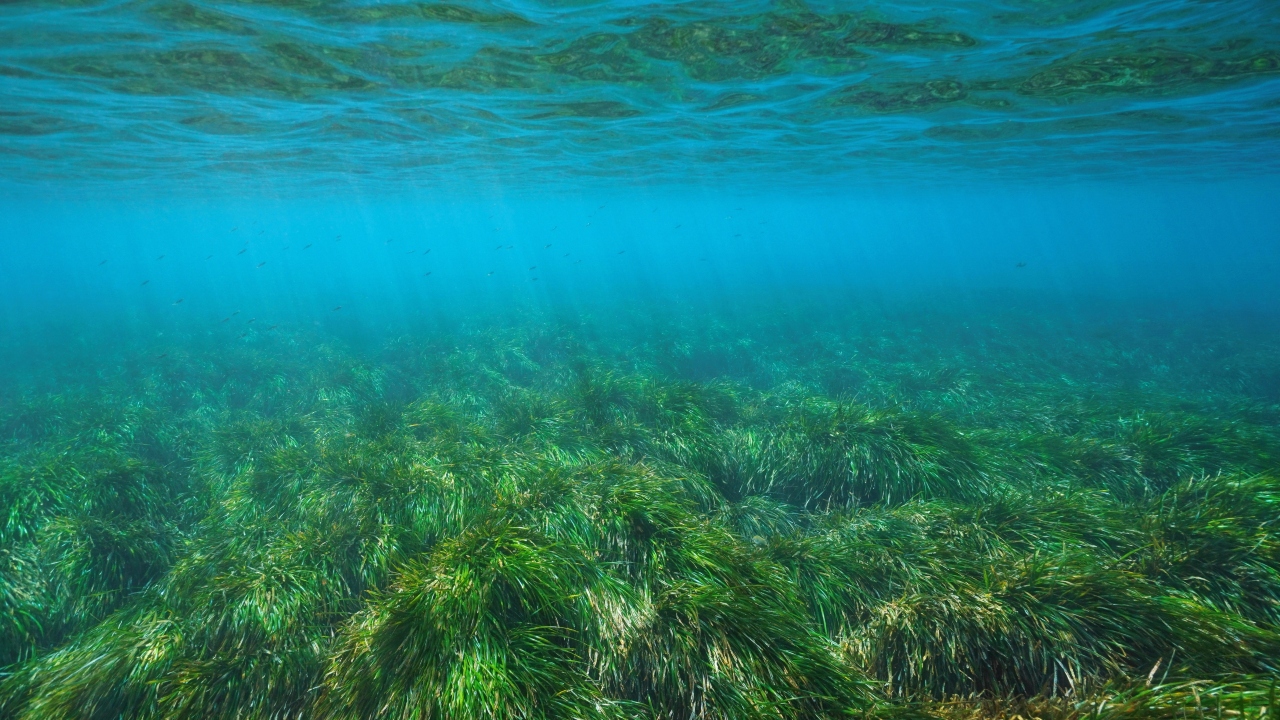Join us as we celebrate World Seagrass Day 2024 (Friday 1st March), and explore the importance of seagrass ecosystems in our oceans.
Editors' note: Why Seagrass, you may ask?! theICEway is heavily involved in the cruise industry, delivering IT solutions and support to many cruise lines. Therefore, the wellbeing of our oceans is at the forefront of our thinking.
The significance of seagrass ecosystems
Seagrass ecosystems are vital components of our oceans, providing numerous benefits to both marine life and humans. These underwater meadows are home to a diverse range of species, including fish, crustaceans, and molluscs. They also serve as important nursery grounds for many commercially valuable fish species.
Seagrass meadows play a crucial role in maintaining water clarity by trapping sediment and reducing wave energy. This helps to prevent coastal erosion and protects nearby coral reefs from excessive sedimentation. Additionally, seagrass acts as a carbon sink, absorbing and storing carbon dioxide from the atmosphere, thus mitigating the effects of climate change.
Furthermore, seagrass ecosystems contribute to the overall health of our oceans by improving water quality. They filter pollutants and excess nutrients, preventing them from reaching sensitive marine habitats and causing harmful algal blooms. Seagrass also produces oxygen through photosynthesis, enhancing the overall oxygen levels in the surrounding waters.
The history and purpose of World Seagrass Day
World Seagrass Day was established to raise awareness about the importance of seagrass ecosystems and promote their conservation. It was first celebrated in 2020 and has since become an annual event observed on March 1st. The day serves as an opportunity to highlight the value of seagrass meadows and the urgent need to protect and restore them.
The purpose of World Seagrass Day is to engage individuals, communities, and organisations in seagrass conservation efforts. It aims to educate the public about the ecological significance of seagrass ecosystems and inspire action to safeguard these fragile habitats. Through various events, campaigns, and initiatives, World Seagrass Day seeks to foster a deeper appreciation for seagrass and encourage sustainable practices that support its survival.
Highlights of World Seagrass Day 2024
World Seagrass Day 2024 promises to be an exciting and informative event for all seagrass enthusiasts. The day will feature a series of virtual conferences, workshops, and interactive sessions led by renowned experts in the field. Participants will have the opportunity to learn about the latest research findings, conservation strategies, and success stories from around the world.
One of the highlights of World Seagrass Day 2024 is set to be the unveiling of a ground breaking seagrass restoration project. This innovative initiative aims to restore degraded seagrass habitats using advanced techniques and technologies. The project will serve as a model for future restoration efforts and demonstrate the potential for seagrass recovery.
In addition, World Seagrass Day 2024 will showcase community-led conservation initiatives and the positive impact they have had on local seagrass ecosystems. These inspiring stories will highlight the power of collective action and the importance of grassroots involvement in seagrass conservation.
Furthermore, World Seagrass Day 2024 will provide a platform for scientists, policymakers, and stakeholders to collaborate and exchange ideas. It will foster discussions on key issues such as climate change, pollution, and sustainable fishing practices, and explore innovative solutions to address these challenges.
Overall, World Seagrass Day 2024 will be a celebration of the progress made in seagrass conservation and a call to action for a more sustainable future.
How to get involved in World Seagrass Day
There are several ways to get involved in World Seagrass Day and contribute to seagrass conservation:
1. Participate in local events: Check for events happening in your area, such as beach clean-ups, seagrass planting activities, or educational workshops. These events provide opportunities to learn about seagrass ecosystems and contribute to their preservation.
2. Spread awareness: Share information about World Seagrass Day on social media platforms and encourage your friends, family, and colleagues to join the movement. Use hashtags like #WorldSeagrassDay and #ProtectOurSeagrass to amplify the message.
3. Support seagrass research and conservation organisations: Consider donating to organisations that work towards seagrass conservation and restoration. These funds can help support research projects, outreach activities, and on-the-ground conservation efforts.
4. Practice responsible boating and fishing: When boating or fishing in seagrass habitats, be mindful of your impact. Avoid anchoring or dragging nets in seagrass meadows to prevent damage. Follow sustainable fishing practices and adhere to local regulations.
5. Reduce your carbon footprint: Climate change poses a significant threat to seagrass ecosystems. Reduce your carbon emissions by adopting eco-friendly practices such as using renewable energy sources, minimising waste, and choosing sustainable transportation options.
By taking these actions, you can make a positive difference in the protection and conservation of seagrass ecosystems.
The future of seagrass conservation
The future of seagrass conservation relies on collective efforts and a commitment to sustainable practices. While seagrass ecosystems face numerous challenges, there is hope for their preservation and recovery.
Scientists, policymakers, and conservationists are working together to develop innovative strategies and tools for seagrass restoration. These efforts include the use of artificial seagrass beds, DNA-based monitoring techniques, and the implementation of marine protected areas.
Public awareness and engagement play a crucial role in seagrass conservation. By educating communities about the value of seagrass ecosystems and the threats they face, we can inspire action and foster a sense of stewardship towards these vital habitats.
Furthermore, integrating seagrass conservation into national and international policies is essential. Governments and regulatory bodies must recognise the ecological and economic importance of seagrass ecosystems and implement measures to protect and restore them.
Ultimately, the future of seagrass conservation depends on our collective responsibility to safeguard these fragile ecosystems. By working together, we can ensure the preservation of seagrass for future generations and the continued health of our oceans.












Leave a Comment